In 2018, Britain didn’t only tear itself apart over Brexit; it split over another issue, brewing for years: the rights of transgender people.
The faultline finally cracked open in early autumn. Over the summer, the government had launched its public consultation into how to update the Gender Recognition Act, the 2004 law that governs how trans people can change their gender legally. The plan was to make it easier.
Just four days later, rows in the press and across social media spilled out onto the streets. Anti-trans feminist protesters disrupted London Pride by charging the front of the parade exclaiming that trans rights “erase lesbians”. It took only a month for this isolated protest to atomise into a national backlash.
Stickers were plastered around public places: trains, toilets, monuments, the offices of Britain’s largest LGBT charity, Stonewall. The stickers, produced by a radical feminist group called Liverpool ReSisters, said, “Women don’t have penises,” complete with a line drawing of one. The penis doodle quickly became the symbol of those seeking to exclude trans women.
Trans-critical feminist groups sprang up. Activists distributed leaflets calling on people to respond to the consultation and resist any changes to the law. In retaliation, LGBT activists affixed posters around Manchester’s Gay Village making clear that anti-trans campaigners were unwelcome.
Legal cases erupted. Conspiracy theories spread. Speakers were booked and then dropped. Newspapers filled their comment pages with, predominantly, criticism of trans people, trans rights, and what they called the trans “lobby”. Even the Guardian newspaper, previously hedging its bets by giving space to both sides, said in an editorial — its official position — that trans rights “collide” with women’s rights. It divided its own newsroom.
A culture war was alight. At the centre of the fight was one concept: self-declaration (also referred to as self-ID). This is a simplified system by which trans people can have their gender legally recognised, without some of the existing requirements such as having to have a psychiatric diagnosis of gender dysphoria, having to be approved by a panel of experts, or having to live in the declared gender for two years first.

Ireland, Malta, Denmark, Portugal, Belgium, and Norway have all introduced versions of self-declaration with, for the most part, little furore and few problems. Despite the British government saying it would not necessarily introduce such a policy, for trans-critical feminists, it remains one of the most crucial, existential fights.
The fear, principally, is that making it easier to be recognised as a woman would expand the definition of woman and open the doors of women-only spaces not only to trans women but also, potentially, to men pretending to be trans.
Although the entire issue of trans rights split the political left and right, and the LGBT community itself, like no other contemporary argument it also divided women and feminists. Not that a casual onlooker would have known — the fight was framed, baldly, as feminists versus trans people.
All disagreements within these groups were overlooked, with, apparently, all trans people on one side and all feminists on the other. Nuance evaporated.
It meant also that a large group of people were ignored: feminists who support trans rights. While both trans and anti-trans advocates often felt unheard, even silenced, this entire section of women was barely noticed, let alone invited to participate. In particular, pro-trans feminist academics: those who study sex, gender, and feminist theory — the very subjects upon which the battle has been waged.
So, towards the end of the year, BuzzFeed News approached five of Britain’s leading pro-trans feminist academics to ask why they consider trans rights to be in accordance, rather than in collision, with women’s rights. They were selected both for their position and the relevance of their expertise.
Akwugo Emejulu is a professor of sociology at the University of Warwick whose research examines both gender and race inequality, and has contributed to several books on the subjects. Sally Hines is a professor of sociology and gender studies at the University of Leeds who has also written several books on gender, sexuality, identity, and transgender issues.
Alison Phipps, a professor of gender studies at the University of Sussex, writes extensively on sexual violence and feminist theory. Vanita Sundaram focuses on sexual violence as a sociologist at the University of York. And Tracey Jensen is also a sociologist, working on gender, the media, and social policy at Lancaster University.

These five women did not want to speak for trans people, but wanted instead to explain why their interpretation of feminism includes trans rights. Their views also do not represent all feminist academics, many of whom disagree.
But what the academics said exposed why the subject has become so flammable. For them, the war on trans people is a classic moral panic, a magnified distortion that distracts and scapegoats; exactly how the powerful majority always quashes minorities. Their arguments, set against the wider conversation about trans and women’s rights, also conjure the most profound of human experiences: safety, identity, discrimination, and violence.
Above which hangs a question — one with more dimensions than first appears: Who decides what a woman is, or what a man is?
Overall, BuzzFeed News asked, why do you, as a feminist academic, support trans rights? “Because trans people are people,” began Phipps. “Trans people have the right to define their own identities and live as the person that they are.”
This captured something underpinning the position of all five of the academics: that what trans people say about themselves, their lives, experiences, and identity, should be taken seriously. That to do so is humane, key to honouring the wider principles of human rights, and a basic acknowledgement that trans people know their interior world better than anyone else.
To fail to do this is, for Emejulu, to suggest trans people “have an inability to think for themselves” and therefore are “not truly human”.

Hines, meanwhile, said her stance rests on the fact that gender is fluid and diverse, and so, “Everyone should have the right and autonomy to live their gendered lives as it feels best for them.”
Emejulu and Sundaram argue from another position: that for feminism to really deliver equality and emancipation, it must also focus on the problems women face as a result of oppression on the basis of factors other than their sex: in particular, race, class, sexuality, disability, and gender identity.
“Any feminist worth his or her salt should be advocating for the most marginalised,” said Emejulu. “What we know is that trans women in particular face particular kinds of marginalisation.”
Sundaram echoed this. “My own research area is violence against women and girls, and we know that trans women are more vulnerable to violence, harassment, and everyday abuse than other groups of women. So as a feminist and academic, it’s my responsibility to advocate for that group of women.”
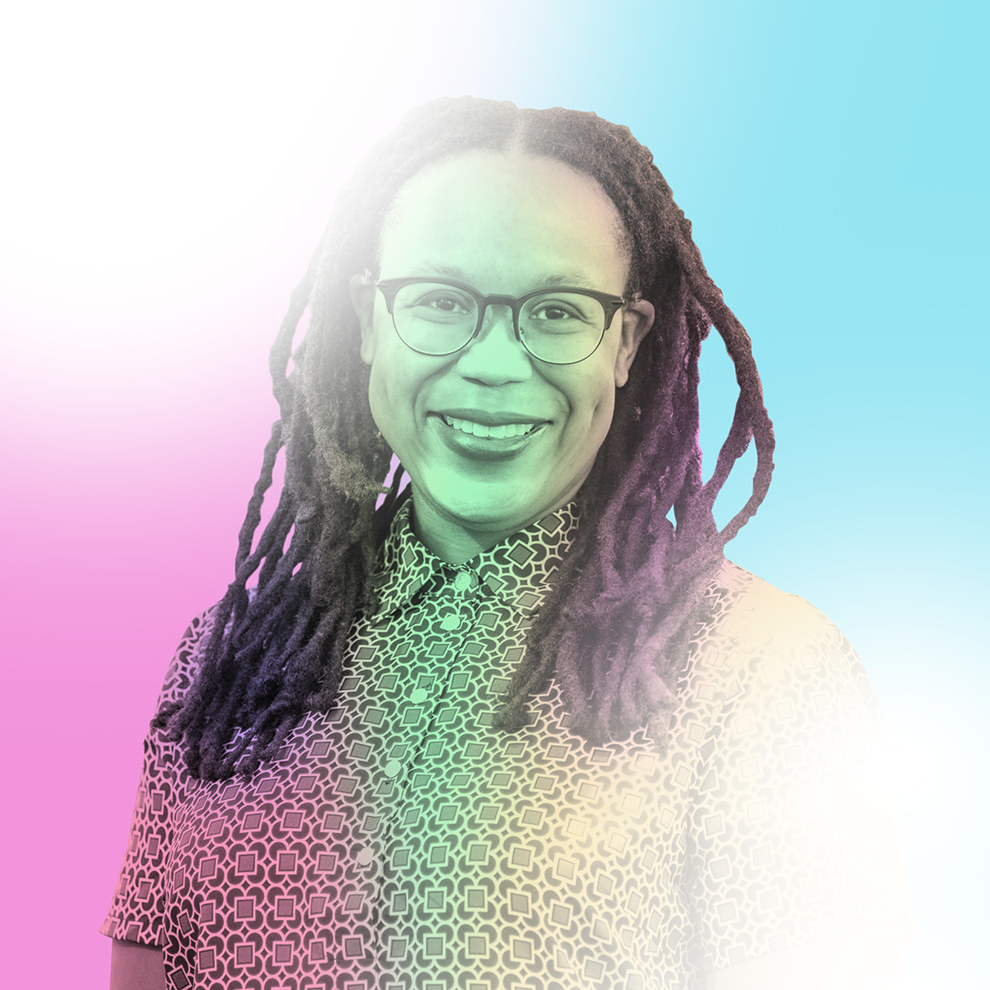
“I think about things in interlinking ways,” she said, referring to how sexism is compounded by, for example, racism, homophobia, and transphobia — what is known as intersectionality. “So it has to be a feminism that challenges patriarchy and other systems of hierarchy that are used to oppress, gender identity being one of them.”
Emejulu is “baffled” by the war that has raged among feminists in Britain over this issue — much more intensely than in the US. “I’m not quite sure what the big deal is,” she said. One of the reasons, said Phipps, is “the blame has been put on to the wrong group, and trans people are carrying the can for problems that are not of their making.”
Several of the academics said that trans people have become the scapegoat, and that it is those with real power over how little women are given overall who should be blamed.
But before expanding on this, there is a fundamental feminist position to be explored.
Biology versus society
Many feminists who question trans rights and trans identities say there are two separate things at play, which shouldn’t be confused: sex, which they argue is entirely biological — male or female — and gender, which is entirely social, a product of our culture.
Therefore, the argument continues, masculinity and femininity are not naturally occurring but concepts that humans constructed and that a patriarchal world has imposed to oppress women. (This part of the argument is shared by almost all feminists.)
So, a gender identity or a transgender identity is, for many trans-critical feminists, simply another product of this: re-enacting an oppressive construct and colluding with a system in which women lose. Why then, they say, should we take a trans identity seriously when it is a person’s body that reveals who and what they are, shaping their experiences from birth?
But for the academics who spoke to BuzzFeed News, the above is an oversimplification of sex and a misreading of gender. First, because the biological reality of sex is far more varied than just male or female.
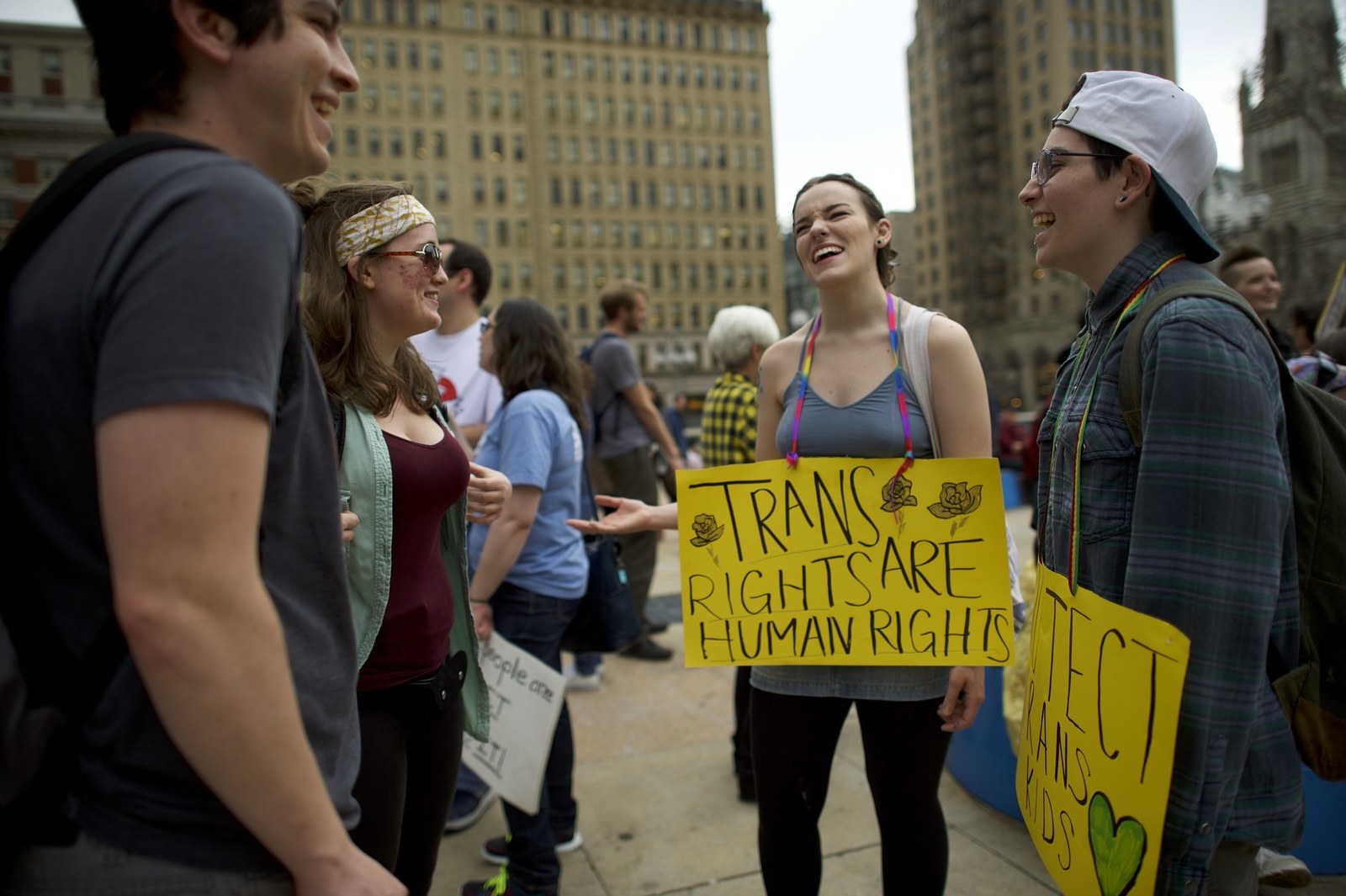
“It is not the case that sex is binary,” said Jensen. “There are so many examples across nature of animal species which depart from a sex binary.” This includes humans, of whom at least 1% are intersex — physically not entirely what is considered male or female. “Biologists are only really starting to understand the enormous complexity of and nuance of sex categories.”
To see sex as a biological phenomenon with two distinct options is therefore incorrect, said Hines, a “reductive understanding of what sex is. It’s a complex combination of different chromosomal and biological factors.”
It is commonplace for people to say gender or gender identity is not one or the other but a spectrum (or a three-dimensional reality). For these professors and for scientists more generally, however, the same is true for biological sex: It is a range of chromosomes, sex hormones, and genital and reproductive variations.
Several of the academics described what happens to intersex people, whose bodies at birth do not conform to standard ideas of what is male and female, to explain and shed light on how sex operates for everyone.
If at birth it is clear the baby is intersex (perhaps because their genitals are ambiguous), a doctor decides which sex the infant should be called, or which sex that baby should be moulded into. This can be a practical decision based on how the genitals look and whether they could more easily be turned into a vagina or a penis. The doctor, therefore, assigns the sex, regardless of how that baby might feel later in life.
Why this is relevant, said the academics, is because it is the doctor, not biology, deciding what the sex is. This process reveals something universal, said Hines.
“A really good way of illustrating that is, rather than to think of ‘biological sex’,” she said, “is to think of ‘sex assigned at birth’, because what that does is show that we’re talking about bodies and biology but we’re also talking about someone in society making a decision about what that means.”

In other words, sex is a social interpretation; a doctor decides the sex based on a baby’s genitals, regardless of internal organs, chromosomes, and hormones (all of which might contradict this).
So who is best fit to decide someone’s sex, and thereby assume their gender identity? Is it society, a doctor, or the individual themselves?
The other problem with biology, when discussing feminism and trans people, is where it leads, said Emejulu.
“The goal,” she said, referring to feminism throughout history, “was always to say that biology was not destiny because that was precisely the argument that people used to keep women in private spaces: that women with their ‘smaller brains’ were ‘prone to fainting’ and are not fit to be in public spaces, such as politics and the workplace.”
Using biology, therefore, to further the case for feminism, does not work, she said. “So I find it baffling that people would use these arguments in order to exclude another group of women.”
Except Emejulu is not baffled at all. For her, many feminists who oppose trans rights also ignore the rights of black, Asian, and other ethnic minority women. These exclusions are related, she said. “This has always been the dark heart of white, feminist politics: a jealous guarding of the boundaries of who gets to be a woman.”
She cited several examples of white feminists excluding women from ethnic minorities, but began with the earliest. “In the US, we had the famous march on Washington for women’s rights in 1914 and the suffrage organisers did not want black women marching with them because they weren’t marching for their rights.”
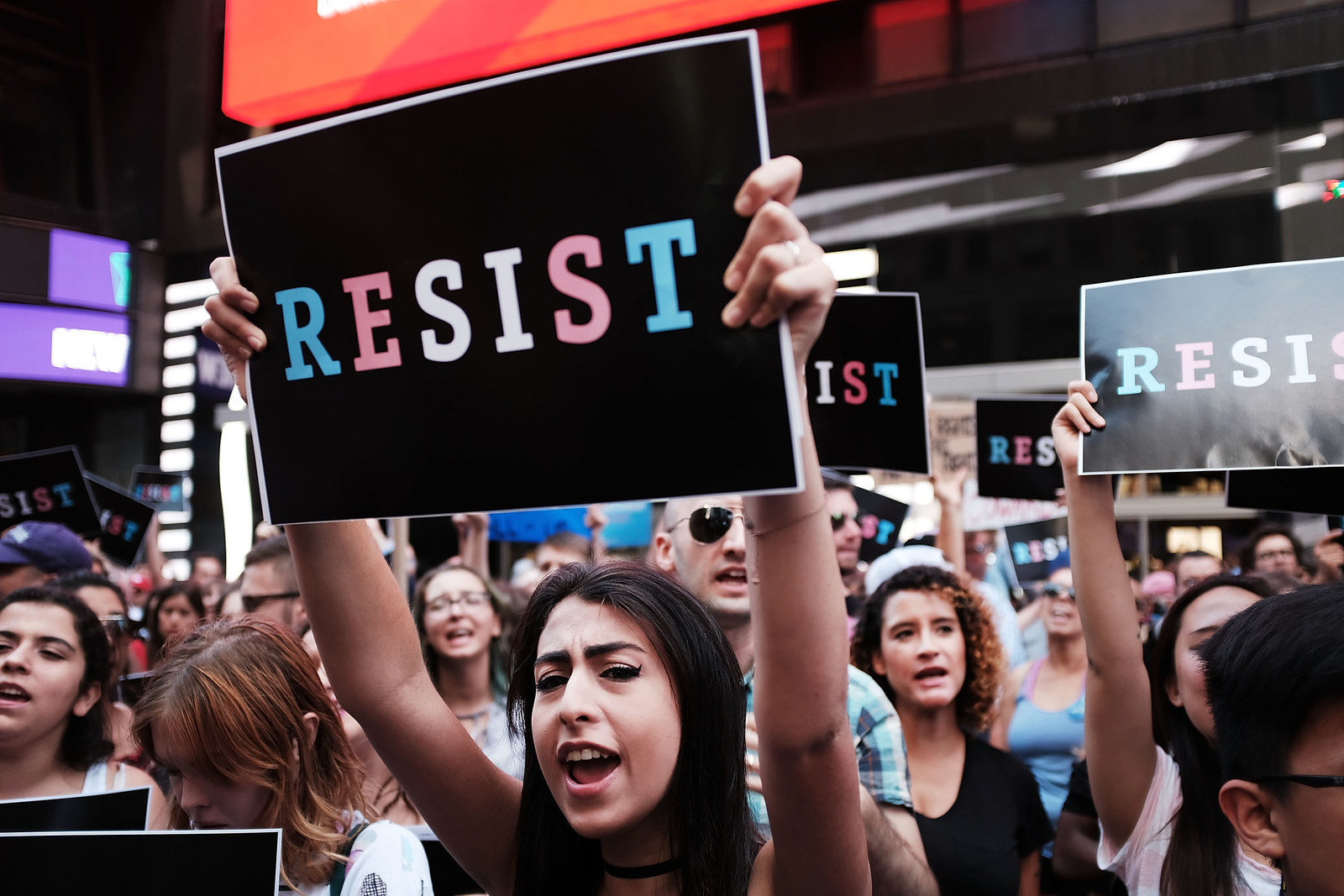
This continues to the present day, she said. “Boundary making is what’s crucial here.” Therefore, she said, excluding trans people is a way of keeping one’s position or status. And when it isn’t trans women being excluded, it switches to other groups, such as Muslim women who are viewed, she said, as “a threat to this idealised kind of white femininity”.
Hines agrees. Keeping trans women out is, she said, “regulating who can belong to a category in order to close down membership, in order to protect the rights of a dominant majority [white women]”.
Using biology to exclude trans women, said Emejulu and Sundaram, also mirrors the way racists use biology: eugenics, in which races are eliminated due to a belief that they are inherently, biologically inferior. But race, said Emejulu and Sundaram, is not a simple, biological category any more than sex is, and to suggest otherwise leads to these dark places.
“This is why I think it’s a useful parallel to think about sex as a social construct,” said Sundaram. “Nobody’s disagreeing that there are particular physical characteristics that we see occurring across particular groups, but the way we label them and the meaning we imbue them with is completely social.”
She added that to ignore this, and to take it to its natural conclusion, anti-trans feminists “would have to define women who are not chromosomally women as not women”. Intersex women, assigned female at birth, would therefore be locked out.
Beyond biology, said the academics, is another social construct: gender. But for Phipps, two things are perfectly possible at the same time: recognising how gender is used against women while also recognising that gender identity can be profound.
While some people have a very strong sense of gender identity, she said, others have little or no gender identity, and both should be respected. “Supporting people to identify how they like doesn’t stop us from critiquing that social/structural gender binary.”
There is something else important, too, she said: that trans-critical feminists will often highlight things trans people say to explain their gender identity as evidence that they are simply aping a restrictive notion of gender.
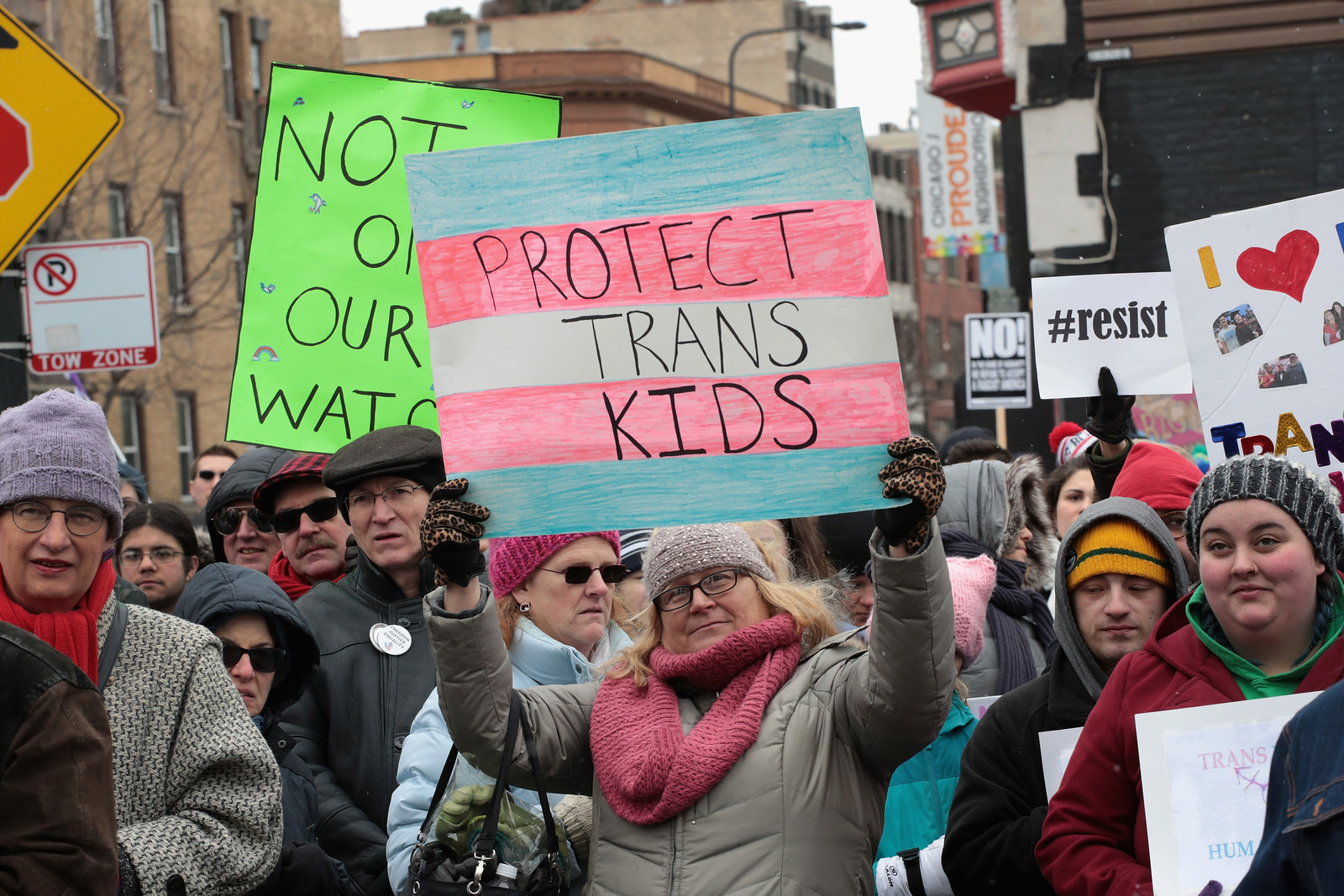
A trans woman might say, for example, that she played with dolls as a child. But, said Phipps, trans adults and children simply “use the language that is available” when that might be the only way they know to convey what is deep, complex, and almost inexpressible: their gender identity.
The academics’ position overall is clear: However one explains one’s gender identity, it can be a fundamental part of a person’s sense of self and therefore should not be dismissed.
“Identities are all social,” said Phipps, “but that doesn’t mean they’re not real.”
What is also real, however, is the fear fuelling the most emotive of flashpoints surrounding trans rights.
Sexual violence
The prospect of making it easier for trans women to obtain legal recognition of their gender has led many feminists to fear the worst: that women-only spaces will be used by trans women, or even men abusing the system, to sexually assault and rape women.
But while the academics who spoke to BuzzFeed News expressed deep concern about sexual violence generally, the idea that trans women were a reasonable, proportionate target for such fears or that simplifying their legal recognition would lead to an increase in attacks in toilets or prisons was unfounded, they said.
“I understand the fear of sexual violence,” began Phipps. “I’m a survivor of sexual violence myself.” But the evidence, she said, does not show trans women to be anything like as sexually violent as men, and perhaps no more so than women generally — while instead being even more likely to be victims. Stoking such fear, meanwhile, only serves to harm all women.
“Sexual violence and the fear of it is one of the main things that keep women under control in our society,” she said. “What I don’t understand is using that fear in order to exclude a group who are actually even more at risk of sexual violence in many ways than cis [non-trans] women are.”

Trans women are capable of sexual violence just as any other group is, she said, but painting them as predators when they are routinely victims is unjust. And because perceived threat is not the same as actual threat, policies should be “based on actual levels of risk, which are low”. The risk of being raped by one’s husband, by contrast, is inordinately higher, which is why this furore is an odd paradox for Phipps.
Radical feminists who wish to bar trans women from women’s spaces are, she said, on the one hand “trying to dispel the myth of the ‘stranger rapist in a dark alley’”, which “keeps women under control and stops them going out”, while on the other hand “reinforcing the idea of the stranger in the toilet, or the changing room, who might jump out and rape you”.
A troubling element of this, said Phipps, is that trans women who do not “pass” — those who are recognisable as trans — are deemed more of a threat, simply because of how they look.
This leads to another paradox, she said: that the manlier a trans woman happens to look, the more they are judged a predator — an assumption based on old ideas about the differences between the sexes. Rather than freeing women, argued Phipps, this reinforces how the sexes are supposed to look, which is exactly what so-called “gender critical” feminists say they oppose.
Trans women, then, who are judged for invoking dolls and pink to explain their identity are also judged if they look insufficiently feminine. They can’t win, said Phipps, which is exactly the kind of bind that all women would recognise.
Hines said this Catch-22 operates more generally in critical discussions about trans people: Trans people who have surgery are accused of butchering their bodies but then, if they do not, are deemed unworthy of either the label “trans” or “woman”.
“It does not make sense,” she said. “It just shows the lack of joined-up thinking.”
What everyone is left with, however, is the practical issue of managing women’s spaces.
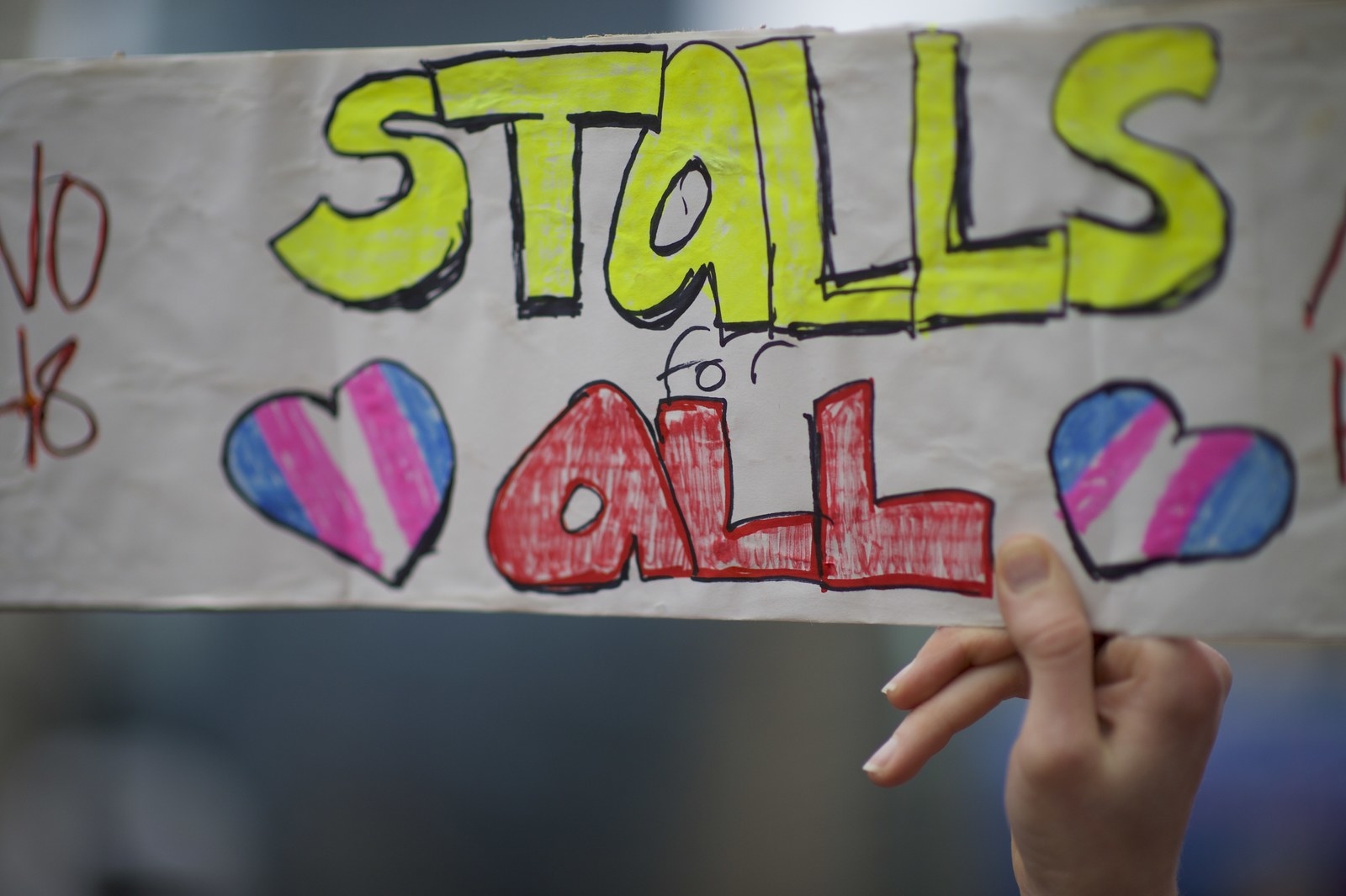
“My argument would always be, well, trans women are women, so you’re not talking about men in women’s spaces, you’re talking about women in women’s spaces. Differently bodied women — but still women,” Hines said. “But what is the solution? I would always argue that those safeguarding procedures are in place.”
In the end, therefore, it comes down to good oversight. It is “about how you manage that space, not about who you include and exclude”, said Phipps. Therefore in prisons, individual risk assessment should be undertaken rigorously to avoid abuse. “With refuges, trans women have been in women’s refuges for a long time now and that has been managed incredibly well.”
There is also nothing new here, added Hines. “Trans women haven’t just appeared. They haven’t just started going into rape crisis centres or prisons, this has been going on for decades, and there have been very few problems, but now it has become a moral panic.”
The notion of keeping trans women out of women-only domains, said Phipps, also hinges on a false idea: that there is any such thing as a “safe space”, free from any prospect of sexual violence.
“It’s a misnomer,” she said, and it ignores a hidden truth: that it is not just men who sexually assault. Studies have revealed, for example, that women are victims of sexual violence in prison by other women inmates (who are not trans). Many men also already work in women’s prisons. So, she added, “If we’re worried about trans women in a woman’s toilet or in prison, why aren’t we worried about just women [generally]?”
The idea that men will suddenly abuse a system of self-declaration by filling in all the legal forms to change their gender in order to enter women’s spaces to assault them is illogical and far-fetched, said the academics, when there are limitless easier opportunities elsewhere.
“Male rapists who want to rape a woman in a women’s toilet wouldn’t bother to put a dress on first,” said Phipps. “It’s a ridiculous assumption that violent men won’t have access to women anyway. We know that they will, so I question whether some of these arguments are being made in good faith.”
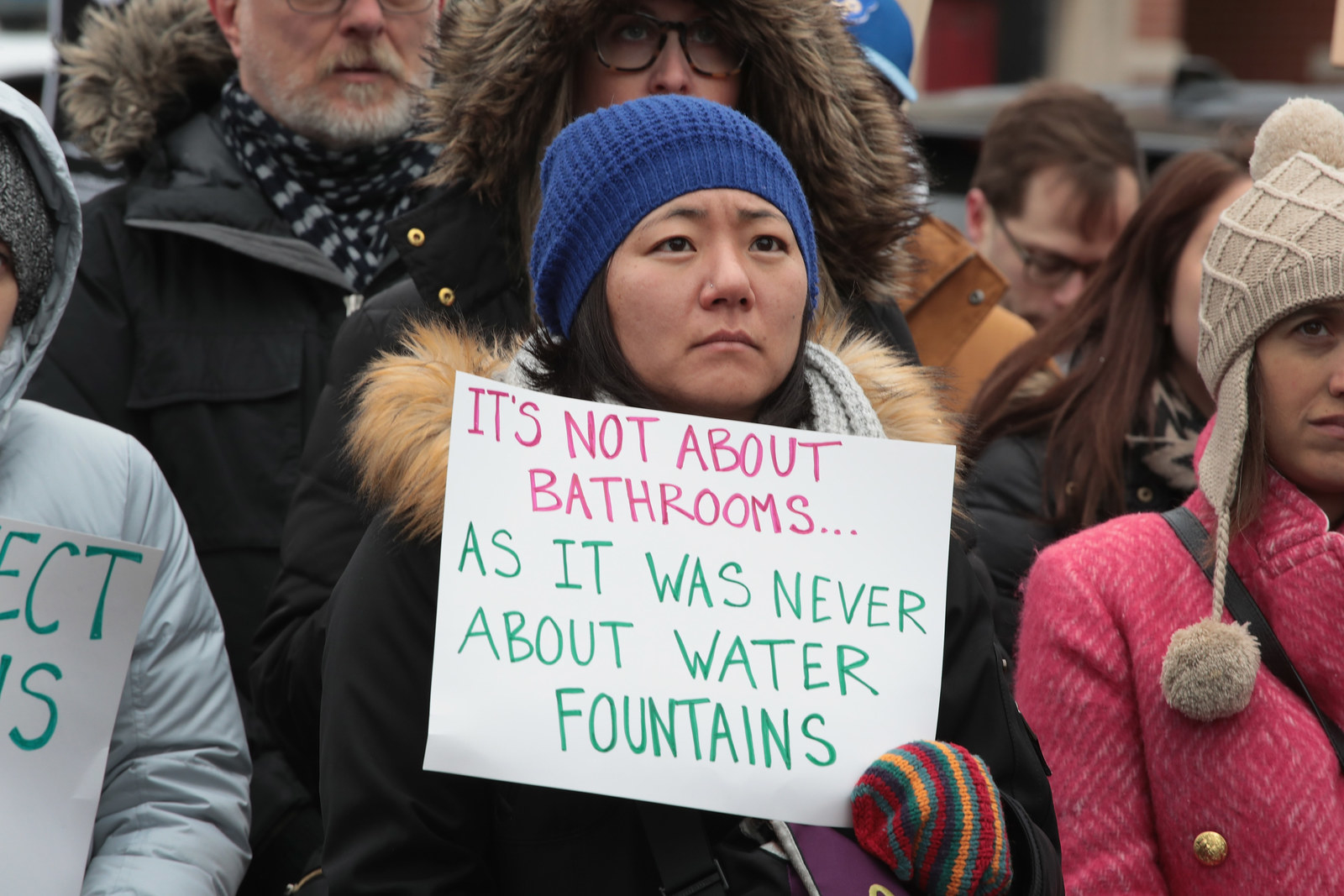
The image of “this trans woman who’s actually a man running round seeking to sexually assault women in women-only spaces” is, said Sundaram, a “complete falsehood and the creation of a monster in the public imagination”. Earlier this month, an anti-trans group in the US called MassResistance admitted that the argument that men would suddenly start jumping out of women’s toilet cubicles was “largely contrived”.
Several of the academics pointed to the absence of such incidents in Ireland over the past three years since it introduced self-declaration. A report in the Guardian earlier this year found no evidence of men abusing the system.
Instead, Jensen describes the situation in the US, arguing that it is the press causing problems around trans-inclusive toilets. “The introduction of these spaces is always accompanied by a sustained media campaign of ‘bathroom panic’, where fake and unsubstantiated urban myths about ‘trans predators’ have been spread by dubious media outlets in order to amplify alarm.”
She concluded, “In none of those US states has the introduction of trans-inclusive bathrooms led to an increase in sexual violence — not one.”
The policing of toilets amid this row has, said Phipps and Jensen, led to cases of masculine-looking, non-trans women being thrown out over suspicions that they’re not women. “Bathroom panic already has pernicious effects for all of us,” said Jensen.
All the academics also spoke of their concerns over the effect of anti-trans beliefs on one particular demographic: children.
Children
Nowhere in the debate is there more heat than around the treatment of children who question their gender identity. It is, in some ways, a mirror of the wider discussion over trans identities, but with everything intensified because minors are involved. Anyone seen to be intervening, therefore, can be accused of imposing their agenda and potentially harming our most vulnerable. Every part of the discussion, meanwhile, pivots on one question: Who knows best?
For these academics, the entire furore is a prime example of a moral panic: a concocted outrage that whips up fear and ignores the more sober facts.
Anti-trans feminists often claim that the rising number of children being referred to gender identity clinics is itself alarming, and that merely being a tomboy or a bit feminine is now enough to fast-track a child into the waiting room of such a clinic. Children, they argue, cannot judge what their gender identity is, so should be kept away from any decisions around it. Many also question the use of so-called “puberty blockers” — hormones that delay the onset of adolescent sexual maturity.
But Jensen pointed to the reality of help offered: Children in Britain are not given surgery until age 18 and are only given hormones at 16, and there is only one clinic to which children can be referred. Contrary to what many think, she said, “gender identity clinics do not have an agenda to ‘encourage’ transition: There are many possibilities around treatment, including minimal or no intervention.” Young trans people have told BuzzFeed News they decided not to transition following support at a gender clinic.
Furthermore, said Hines: “It’s an incredibly long and complex process. And hormone blockers happen after much, much counselling. It can take years. The idea you just go along to a clinic and walk out a different gender is total nonsense.”
Where the academics and anti-trans feminists would agree is a fundamental of feminism: that gender norms should not be imposed or forced, that children should be free.
Jensen, for instance, said children need “time and space to explore and reflect on their gender”. Sundaram added that children concerned about their gender should be granted some autonomy over their lives, but in the context of nonjudgmental support that enables them to discover what is right for them, and what is a “fundamental aspect of someone’s identity”.
Here, however, is the crux of the issue, showing the wider debate in microcosm: For pro-trans feminists, trans children experience gender as a profound, intrinsic part of their being, but for trans-critical feminists it is merely society imposing. Everyone appears to want children to be supported; the argument is how best that is done. These academics see the experts at clinics as better placed to help than those outside with no experience and no knowledge of the individual children.
For Hines, then, to not offer kids who need it a referral to a gender identity clinic would be deeply remiss. “The rates of suicide and self-harm among young trans people is incredibly high,” she said. “So what do you want? Do you want those children to suffer? Do you want them to die? Or do you want them to go through a process where they may feel happier? I think it comes down to that.”

Hines and Emejulu expand on this theme elsewhere to ask what those who wish to exclude trans people think the solution is. If, they ask, you want to bar trans women from women’s spaces, or prevent trans children from being referred to gender identity clinics, where should they go that keeps them safe?
But for Emejulu there is something else unanswered. “One of the foundational parts of feminism is the idea of bodily autonomy, that you don’t have outsiders telling you what you can cannot do with your body, so I’m not sure why that principle is not extended to trans folks.” Those who criticise the services provided for trans children, meanwhile, tend not to speak out about needless surgeries routinely performed on intersex children. This silence, she said, “speaks to the fact that people are defending ideal biological forms, and so of course folks wouldn’t be upset by unnecessary surgery because what they’re doing is sorting people — men or women.”
Why, then, is there an endless focus on trans people? The question leads to a key consideration of the evidence underpinning both perspectives.
Anecdotes
For these academics, it is the misuse of data that has in part led to the furore over trans people.
“The exceptional examples become used to weaponise these debates,” said Sundaram. Therefore, whenever a trans person does or says something terrible, they are framed as symbolic of the entire community.
A recent example is Karen White, the trans woman who while living as a man raped women, and then amid transition was sent to a women’s prison where she sexually assaulted female inmates. This particular failure, said some of the academics, has been repeatedly invoked to stoke fear of all trans people.
What the professors described through this phenomenon is a long-established concept referred to as “proof by example”: citing one-off cases — anecdotal examples — to incorrectly suggest a trend. This is also one of the mechanisms by which racism and xenophobia are inflamed.
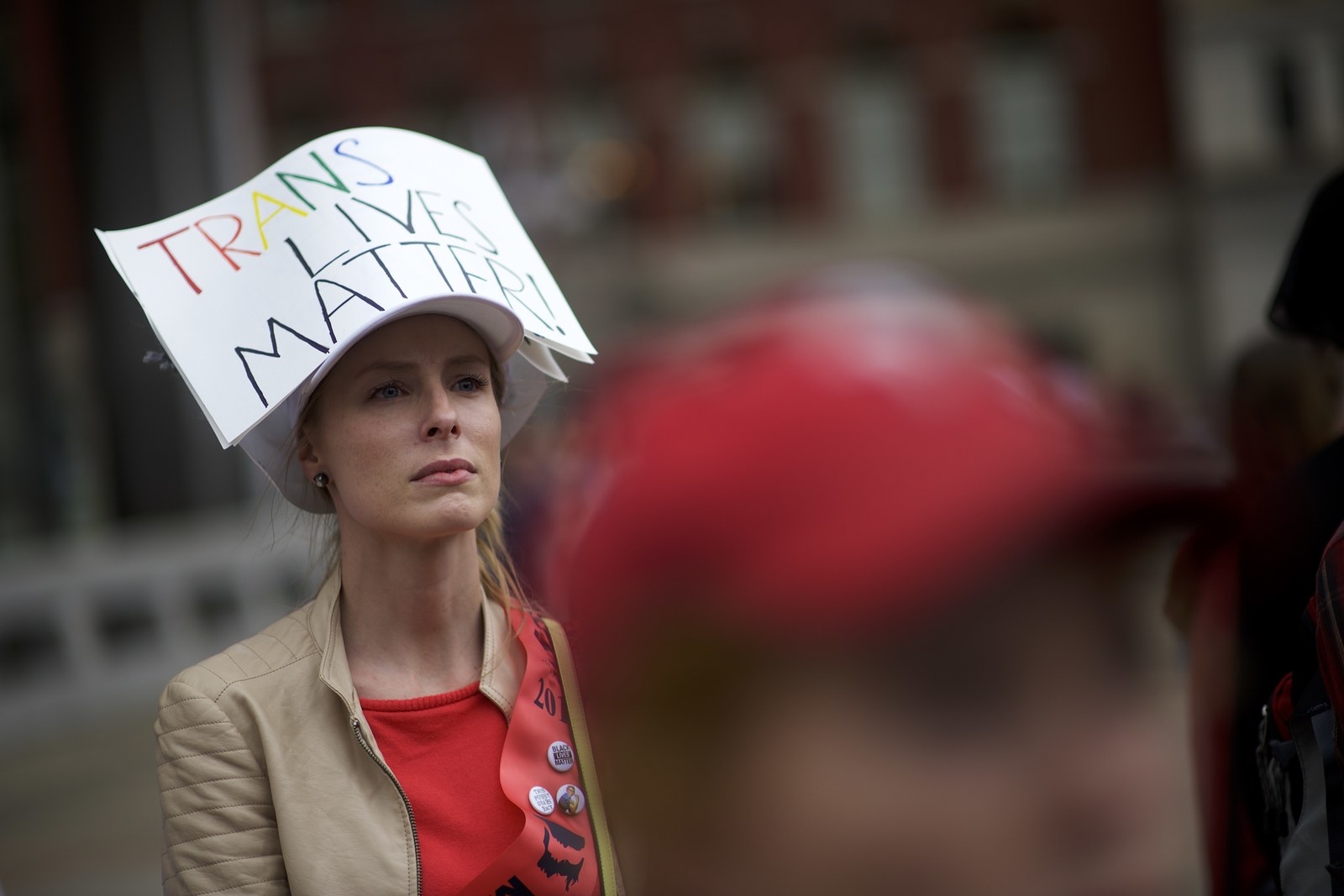
“These cases are being used to exemplify all the things that are false or suspicious about the community and they are absolutely the exception,” said Sundaram. “That happens in various debates around minority rights. It’s a way of upholding the status quo.”
The data is distorted in other ways too, said the other professors: that the minuscule proportion of trans people who change their mind and de-transition is magnified by anti-trans campaigners to suggest being trans shouldn’t be taken seriously; and that the rise in children being referred to clinics is cited as proof they are being influenced by a new trend, rather than the flip side: that previously children were left without help, in the dark, with nowhere to turn.
The academics fear, too, that the entire debate is not shifting. So what effect has this had and where are we heading?
The future
“My overall impression is to feel really sad that is has become so nasty,” said Phipps. “That people who call themselves feminists are contributing to the vilification of marginalised people, in a context where the far right are doing that in spades.”
Some of the academics spoke of the personal abuse they have suffered for supporting trans rights. All are horrified at the tone of the debate. Phipps is disturbed, too, by the links forming between anti-trans feminists and the far right. “Why would you make alliances with some of these groups?”
Although Jensen is “exhausted by the willful ignorance in which so much public debate is swimming” and is afraid of the impact on trans people, she is also convinced there are hopeful signs emerging: in particular, “the enthusiasm with which people — and young people in particular — are opening their hearts and minds to alternative modes and expressions of gender. I see them finding a route through all this.”
The route that Phipps and Hines suggest is building a culture that frees people: eliminating the pressure to adhere to any standards of sex or gender, supporting those who need help, and ending gender’s two-wing prison.
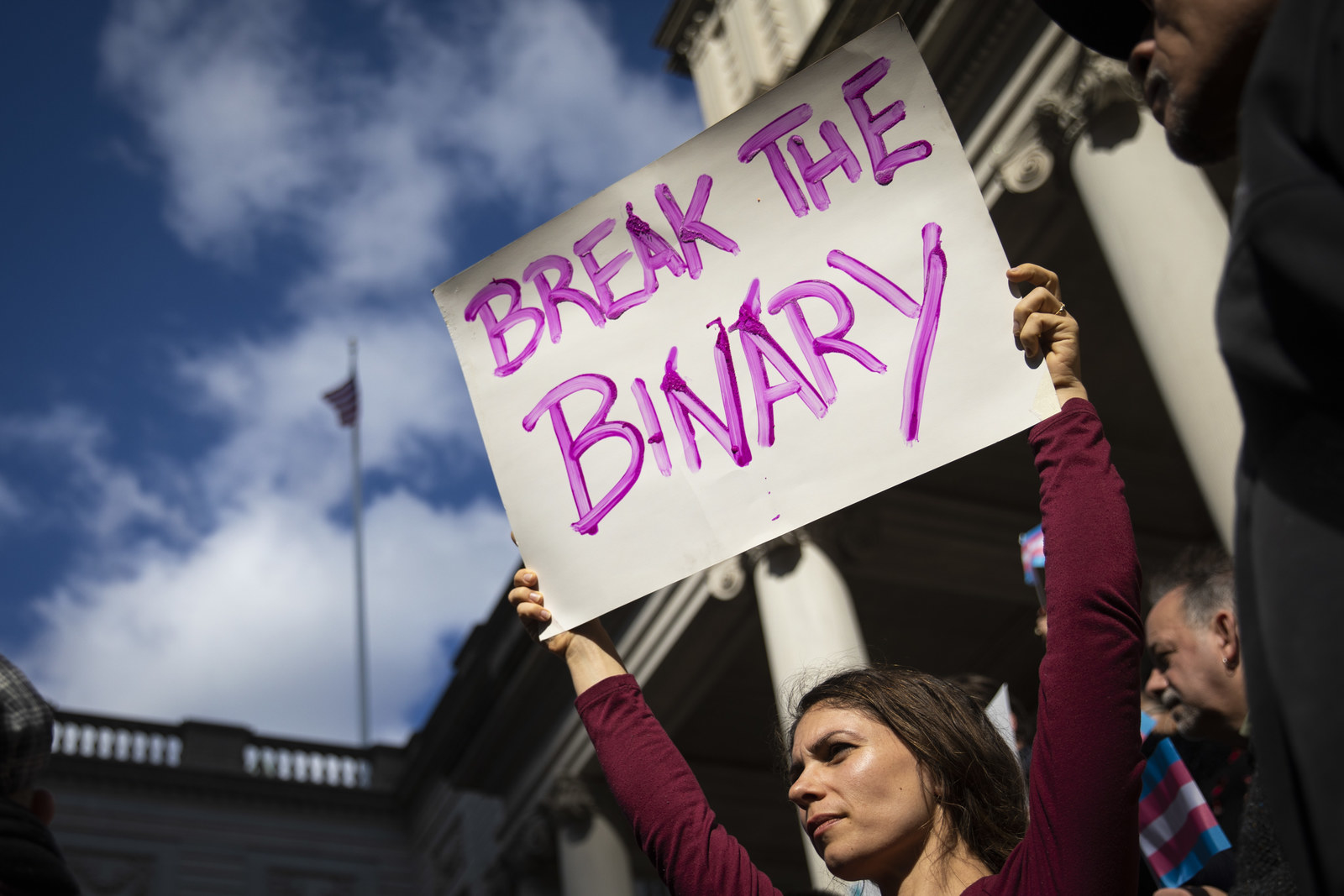
For Phipps, this would mean “more people who are able to express their gender-nonconforming selves who don’t feel pressured to be one side of the binary or other”. Equally, she added, “That doesn’t mean that people who do feel very strongly that they belong on one side should be vilified or criticised.”
For Hines, trans-critical feminists are missing the wider, longer-term potential that those leaving the sex they were assigned at birth offer everyone. “Greater diversity gives greater potential and freedom,” she said.
This invokes Jensen’s response to the first question about why she, as a feminist, is pro-trans. It encapsulates all five women’s hopes for feminism, and the path to true emancipation — the fuel of an argument that continues to blaze.
“Because,” said Jensen, by supporting transgender rights and helping this minority, “we can make the world safer, more livable, and more dignified for all people.”
